Tag: judy rodgers
I changed my mind
Two Mondays ago, the night before the moving truck was due to arrive at my mother’s new (Seattle!) house with everything she owns, Brandon suggested making a celebratory dinner. My mother, it was agreed, would choose the menu. After a moment’s hesitation, she requested steak and Caesar salad. We headed out for groceries.
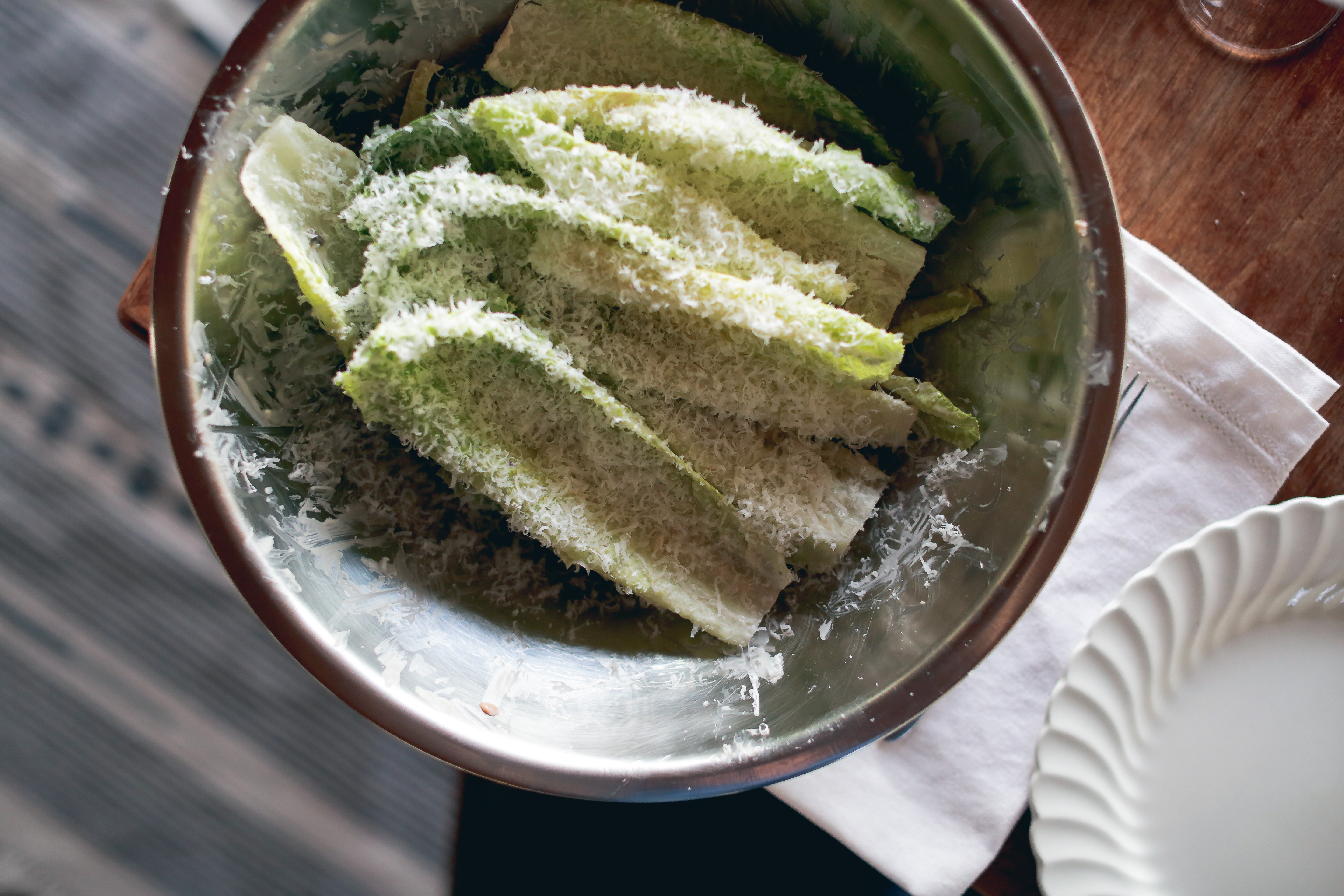
I’m not going to go into great depth about the steak. I don’t know. I feel bored just thinking about writing it. You know how to cook steak. Right? You don’t need me. If you don’t know how, or if you want to try another method, I can tell you that we use Renee Erickson’s instructions (for indoor cooking, not grilling) on page 195-196 of her dreamy A Boat, a Whale & A Walrus, though we test for doneness by temperature (135°F for medium-rare; all hail the extremely not-cheap but worth-it Thermapen!), rather than by time. Thus concludes my discussion of the steak. Let’s talk romaine.
Nobody talks about romaine. I too used to dismiss it, in as much as one might bother to formulate dismissive feelings toward a type of lettuce. But a few years ago, I changed my mind. Of the lettuces available at an ordinary grocery store, I now almost always choose it. It’s not fancy, but it is consistently good, with its mild but unmistakable flavor and that juicy, resilient, water-chestnut crunch. I am not bored by romaine. I usually slice it cross-wise from tip to stem for salads, but sometimes I halve it lengthwise and roast it instead – thank you, Yolanda Edwards! – and sometimes, especially in the case of a Caesar, I just whack off the stem end, dress the leaves, and serve them whole, and we eat them with our fingers.
A couple of months ago, on a quick work trip to California, I was asked to make dressing for a Caesar salad, and I realized with a start that I didn’t know how. It’s not that I consider this a particularly glaring omission in the experience of being alive; there are a lot of things more important, starting with access to affordable housing and clean drinking water and the right to vote and believe me, I could go on, could I ever, but there I was in California, and it was dinnertime. I was at my cousin Katie’s house. Her husband Andre was grilling burgers, and Katie was getting their son ready for bed. My assignment was Caesar salad. Katie is a confident, no-recipes-needed kind of cook, and by the way she mentioned it, I knew she could make a Caesar dressing without much thought. So I did the part that I knew how to do, prepping the greens and putting them in a bowl, while I waited for Katie to finish the job.
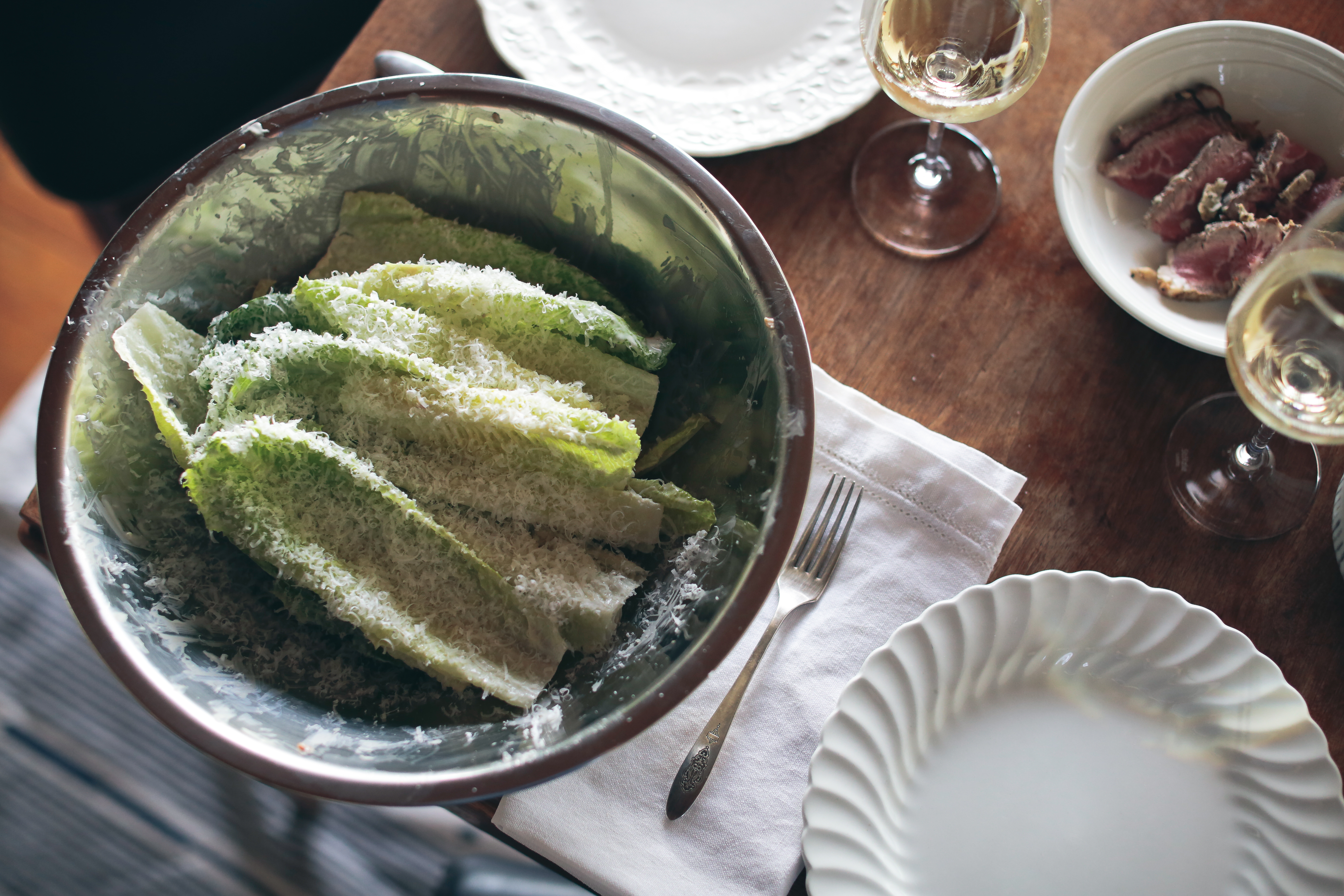
As I expected, she had an easy way with Caesar dressing. She assembled it in a half-pint Mason jar, entirely by eye: the juice of a lemon, maybe a couple tablespoons of mayonnaise, maybe a teaspoon of Dijon mustard, maybe a quarter cup of olive oil, a little vinegar, and black pepper, shaken to mix. We tossed it that night with torn-up kale and some farro that she had cooked earlier and stashed in the fridge. (Katie is full of good ideas like that – fleshing out salads with a handful of toasty cooked grains in lieu of croutons, putting a seven-minute egg on top, etc.) But when I came home, I was faced with that regrettable cosmic phenomenon familiar to all cooks, the phenomenon that makes the same dish taste better when someone else makes it than it does when you make it yourself. I decided to forge my own way.
I took down The Zuni Café Cookbook, my own personal Southern Oracle of cooking, and asked Judy Rodgers, RIP, to teach me. What follows is her recipe. It’s not much more complicated than Katie’s, except the chopping of garlic and anchovies, which I guess is a little complicated. Instead of mayonnaise, it uses egg, which is more traditional but just as easy. Judy Rodgers’s version is what we made for my mother that Monday night, and we all pawed at the salad bowl. But if you’re turned off by using a raw egg, or if you’d just rather use mayonnaise, I’m also including a second recipe, a tweak on Katie’s recipe, a version that Brandon and I have worked up over the past couple of weeks. I happen to like both, and much to my surprise, the mayonnaise-based version has even made a salad-eater out of June, an avowed lettuce-dismisser. We’ve been on a Caesar bender, and I see no reason to stop.
P.S. Re: the Southern Oracle, here we go again…
P.P.S. A particularly great This American Life: “The Problem We All Live With.”
P.P.P.S. Interesting – and, in my experience, accurate.
Zuni Café Caesar Dressing
Adapted from The Zuni Café Cookbook, by Judy Rodgers
Rodgers calls for salt-packed anchovies, but I use Scalia brand oil-packed, which I steal from Delancey. They’re not cheap, but they keep in the fridge for a long, long time, and they have wonderful flavor. Before using, I rinse them well and dry them on paper towels. And about the quantity of kosher salt: a three-finger pinch is the amount you pick up when you pinch with your thumb, index finger, and middle finger.
Oh, and a tip for applying thick dressings, and for applying any dressing to whole leaves of romaine: keep a box of powder-free latex gloves in your kitchen. Spoon some dressing into the bowl of lettuce, slide on a pair of gloves, and use your hands to gently rub the dressing onto each leaf. You could also do it without gloves, if you don’t mind smelling garlicky for a bit.
For dressing:
For serving:
In a small mixing bowl, whisk together the vinegar, olive oil, anchovies, and garlic. Add the eggs, the cheese, and lots of black pepper. Whisk to emulsify. Add the lemon juice, and whisk again, just to emulsify. Taste, first by itself and then on a leaf of lettuce, and adjust the seasonings to taste. I add a three-finger pinch of kosher salt, if not a little more than that.
Spoon as desired onto romaine or other greens, and fold and toss carefully to coat. Add croutons or cooked farro, if you want, and more grated cheese. Serve with a final dusting of cheese on top and some freshly ground black pepper.
Yield: about 1 ½ cups of dressing
A Caesar Dressing Sans Raw Egg
Unless I’m going to make my own mayonnaise, which I don’t do in most everyday instances, I use Best Foods (which is also sold as Hellmann’s).
For dressing:
For serving:
Combine all ingredients in a small mixing bowl. Whisk to blend well.
Spoon as desired onto romaine or other greens, and fold and toss carefully to coat. Add croutons or cooked farro, if you want, and more grated cheese. Serve with a final dusting of cheese on top and some freshly ground black pepper.
Yield: about 3/4 cup dressing
That word is eat
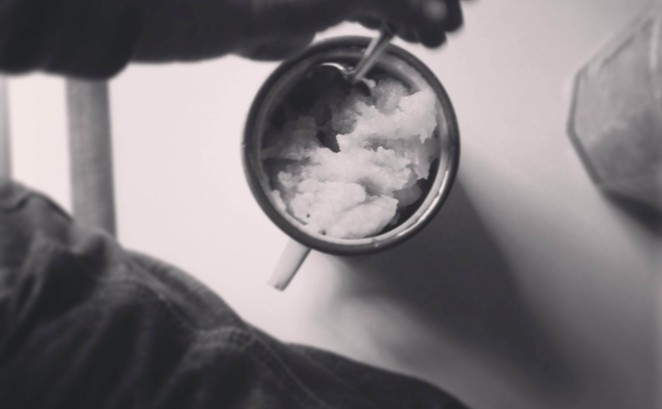
June has mastered a new word, and that word is eat. It’s one of many things I like about her. Because Brandon works most nights, I get up with June most mornings. I have developed a condition that my friend Andrea calls Bionic Mom Hearing, so I sleep with earplugs and a pillow over my head. It’s a sight I think you would enjoy. But she manages to wake me up anyway (MAAA! MAAA!), so I get a bottle of milk from the fridge (prepared the night before, a small gift to my future self), retrieve her from her crib (“UP! UP!”), carry her across the hall to our bed, lie down and listen to her little mouth working at the…
Read moreA reasonable question
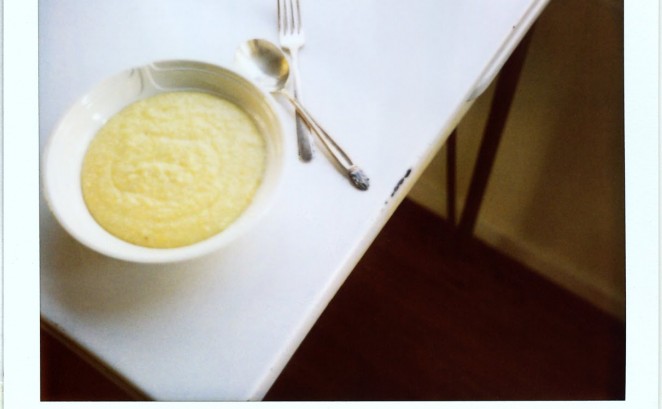
I have been, for quite some time, intimidated by polenta. I don’t like saying that out loud, because it makes me sound like a total cream puff, but in the spirit of keeping it real, I’m saying it. I’m willing to own it. I will also say, however, that as of a few days ago, I am not intimidated by polenta anymore. And I have Judy Rodgers to thank for that. I don’t know where it got its start, this idea that polenta is so tricky to make, but it’s the common line. It’s what I was always told. They say you have to sprinkle the cornmeal into boiling water in a particular way, like a rain shower, and that…
Read moreSomething called sauce gribiche
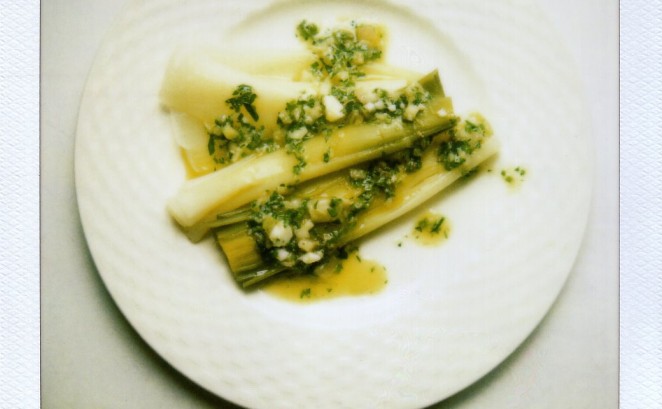
About five years ago, I think it was, I went out to dinner with my friend Keaton and ate something called sauce gribiche. I had never heard of it before, but it was a kind of coarse vinaigrette, with chopped cornichons and capers and hard-boiled eggs, and it was served over asparagus. I don’t know why I remember it so clearly, aside from the fact that I dripped some of it onto my pants, but ever since, I’ve thought about it sometimes, usually when I’m supposed to be thinking about more important things, and I’ve wanted to try making it. It took me a while, as you can see, but yesterday, I finally did. Twice. The thing is, as I…
Read more
